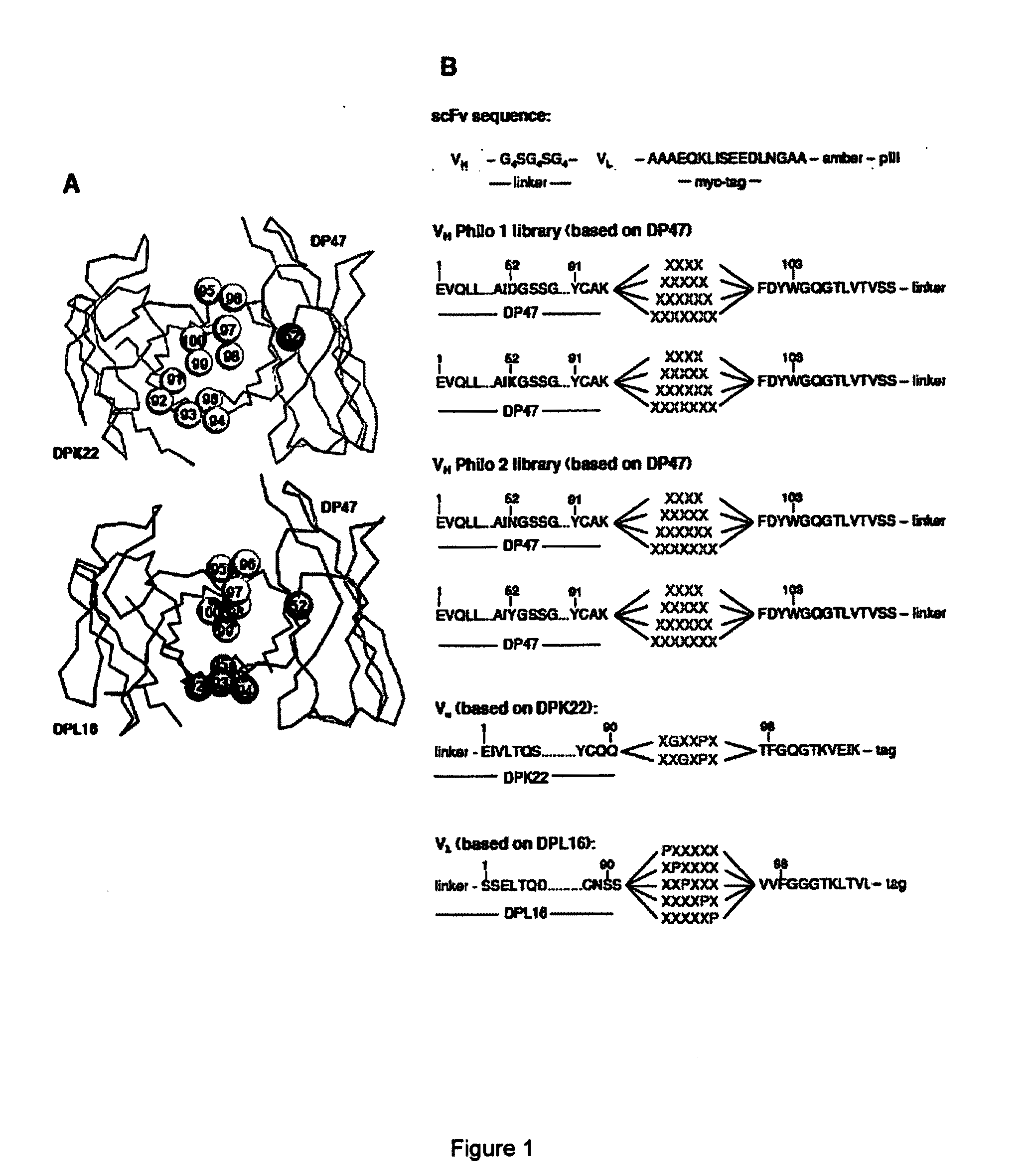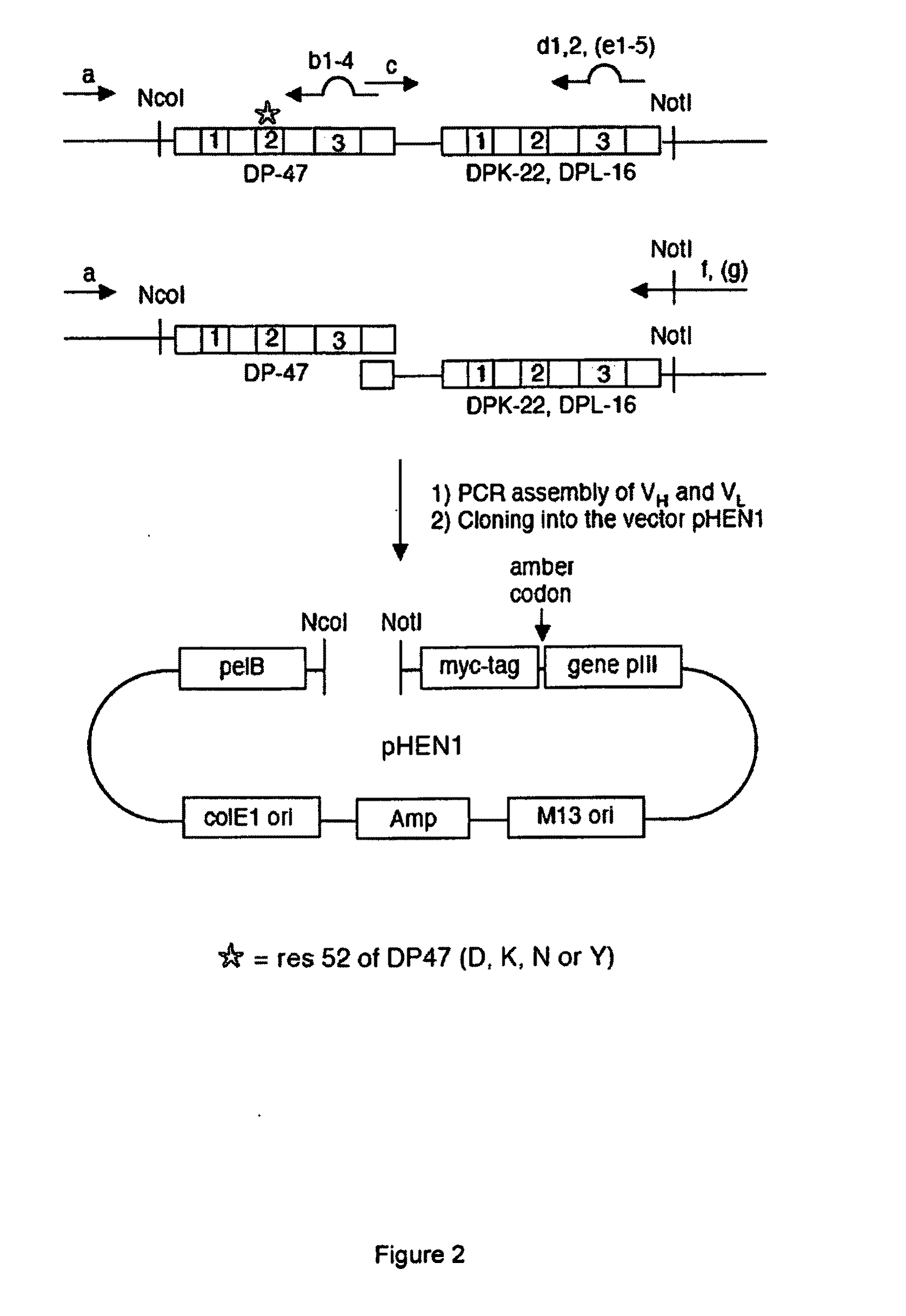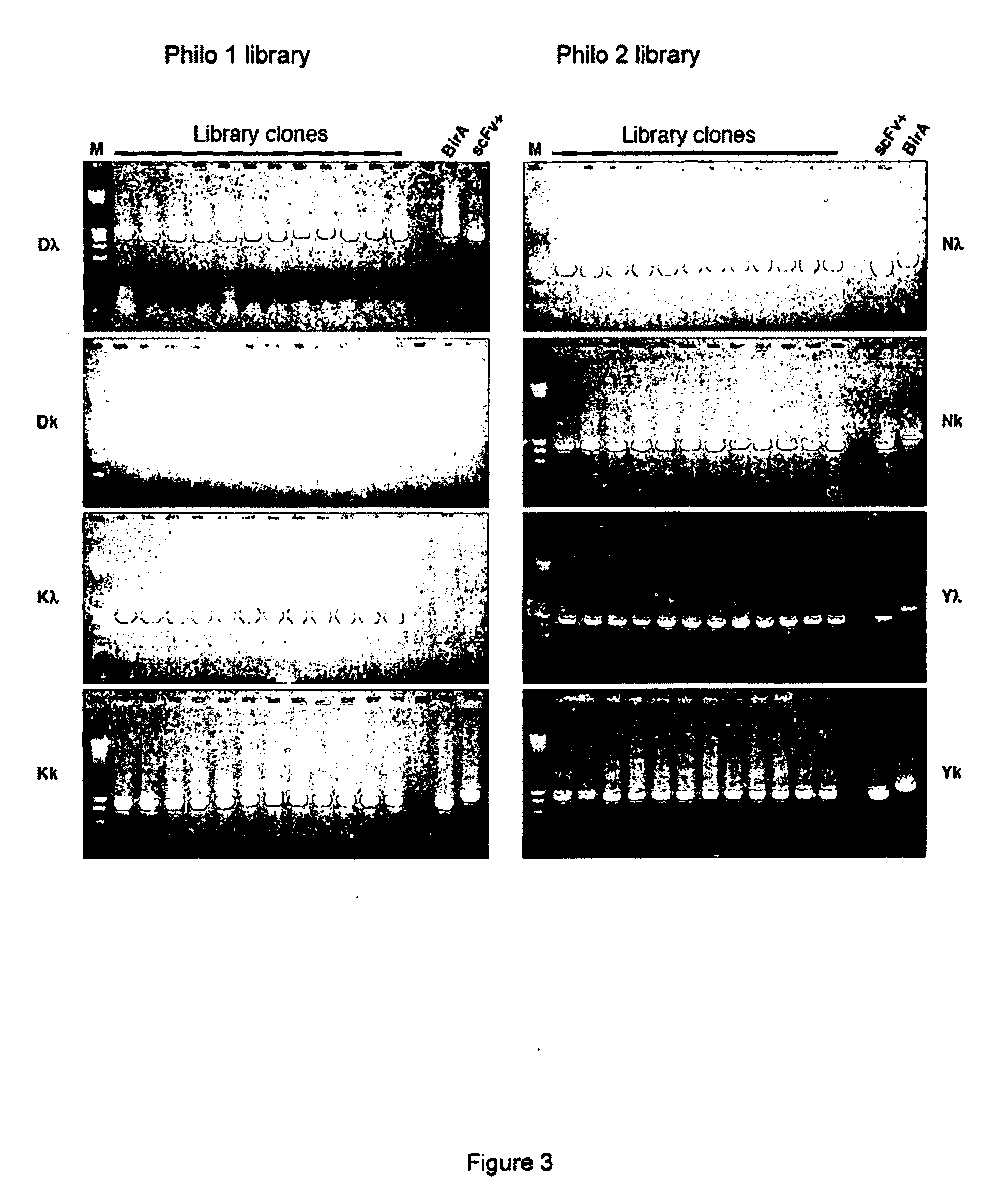Display Library for Antibody Selection
a display library and antibody technology, applied in the field of antibody display libraries, can solve the problems of limited combinatorial diversity at the level of cdr3 loops, cdr2 loop combinatorial mutagenesis is more difficult, and paratope diversity per se does not guarantee epitope diversity
- Summary
- Abstract
- Description
- Claims
- Application Information
AI Technical Summary
Problems solved by technology
Method used
Image
Examples
example 1
Design, Construction and Cloning of Philo1 and Philo2 Libraries
[0134]We constructed synthetic antibody libraries in scFv format based on the ETH2-Gold library, restricting sequence diversity to the CDR3 of the variable heavy and light chain (VH and VL), which are known to largely contribute to antigen recognition, but also mutating a residue within the CDR2 of VH into either charged amino acids, such as D and K (Philo1 library) or polar / partially polar amino acids prone to hydrogen bond formation, i.e. N and Y (Philo2 library) (FIG. 1).
[0135]In our antibody libraries, residues are numbered according to Tomlinson et al. [27].
[0136]We introduced the point mutation at residue S52 of VH germline DP47 by PCR, using an ETH2-Gold clone as template and the primers: S52Dfo, S52Kfo, S52Nfo, S52Yfo (see Table I). The newly generated D-DP47 and K-DP47 were used as template for the heavy chain of the Philo1 library, N-DP47 and Y-DP47 were used for the Philo2 library (FIG. 1B).
[0137]The scFv anti...
example 2
Characterisation of Philo1 and Philo2
[0141]The quality and functionality of the library were assessed by PCR colony screening, dot blot, DNA sequencing and test selection against recombinant antigens. PCR screening was performed using the primers LMB3long and fdseqlong (Table1) and showed that all analyzed clones contained an insert of the correct size of approximately 1000 bp (FIG. 3). Twenty-four clones (three from each sub-library) were sequenced (Big Dye Terminator v1.1 Cycle Sequencing kit; ABI PRISM 3100 Genetic Analyzer) to check for the absence of frameshifts and of pervasive contaminations. All analysed clones showed different amino acid sequences in CDR3 of both heavy and light chains and no frameshift and no contamination.
[0142]The percentage of clones expressing soluble antibody fragments was determined by dot blot analysis of bacterial supernatants (ELIFA system; Perbio, Lausanne, Switzerland) using anti-myc mouse mAb 9E10 [51] and antimouse horseradish peroxidase immun...
example 3
Library Test Selection on Recombinant Antigens
[0143]All selections were performed using recombinant antigens with SDS-PAGE purity >90%. Immunotubes (Nunc, Germany) were coated with antigens at a concentration of 10-6 M in PBS overnight at room temperature. Immunotubes were then rinsed with PBS and blocked for 2 h at room temperature with 2% w / v skimmed milk in PBS (MPBS). After rinsing with PBS, 1012 phage particles in 2% MPBS were added to the immunotubes. The immunotubes were first incubated on a shaker for 30 min and then for 1.5 h standing upright at room temperature. Unbound phage was washed away by rinsing the immunotubes PBS 0.1% Tween 20 and with PBS. The bound phage was eluted in 1 mL of 100 mM triethylamine and inverting the tube for 5 min. Triethylamine was neutralized by adding 0.5 mL 1 M Tris-HCl pH 7.4. The eluted phage was used for the infection of exponentially growing E. coli TG1. More details about selection protocols can be found in Viti et al. [56].
[0144]Philo1 a...
PUM
| Property | Measurement | Unit |
|---|---|---|
| Fraction | aaaaa | aaaaa |
| Pharmaceutically acceptable | aaaaa | aaaaa |
| Bond | aaaaa | aaaaa |
Abstract
Description
Claims
Application Information
 Login to View More
Login to View More - R&D
- Intellectual Property
- Life Sciences
- Materials
- Tech Scout
- Unparalleled Data Quality
- Higher Quality Content
- 60% Fewer Hallucinations
Browse by: Latest US Patents, China's latest patents, Technical Efficacy Thesaurus, Application Domain, Technology Topic, Popular Technical Reports.
© 2025 PatSnap. All rights reserved.Legal|Privacy policy|Modern Slavery Act Transparency Statement|Sitemap|About US| Contact US: help@patsnap.com



